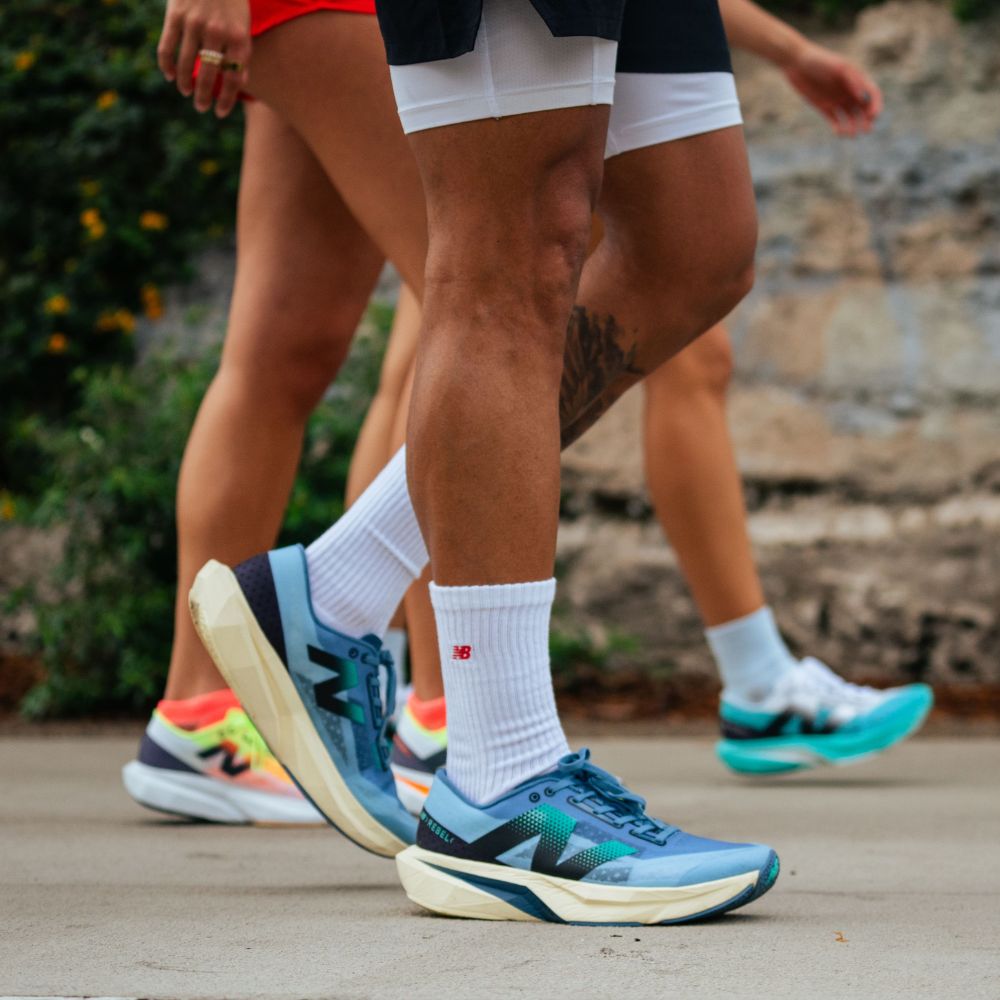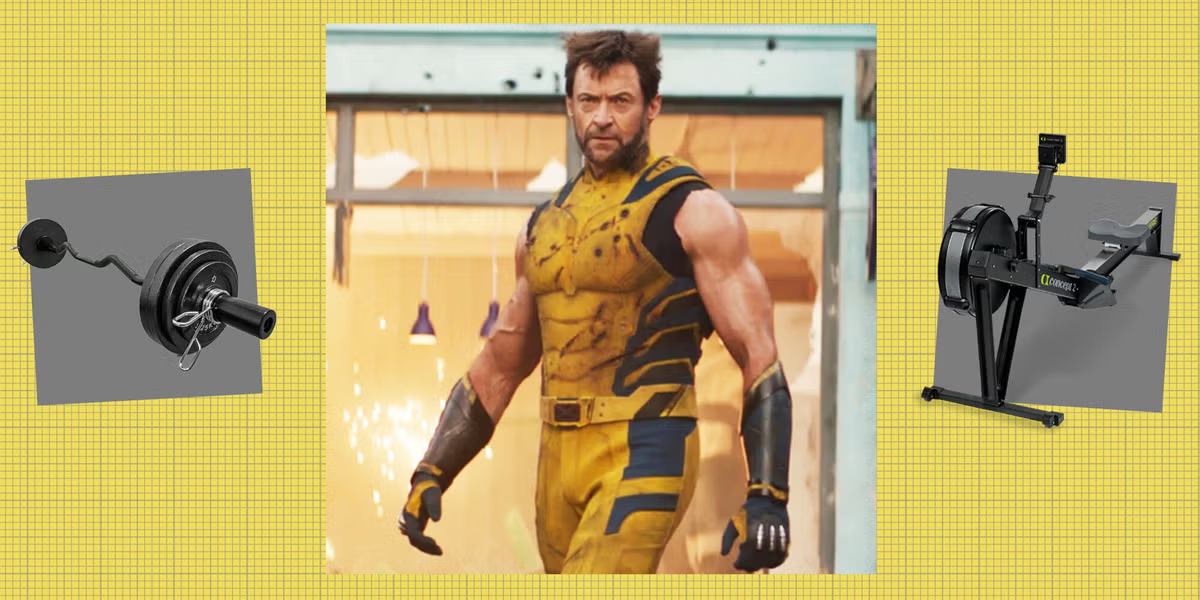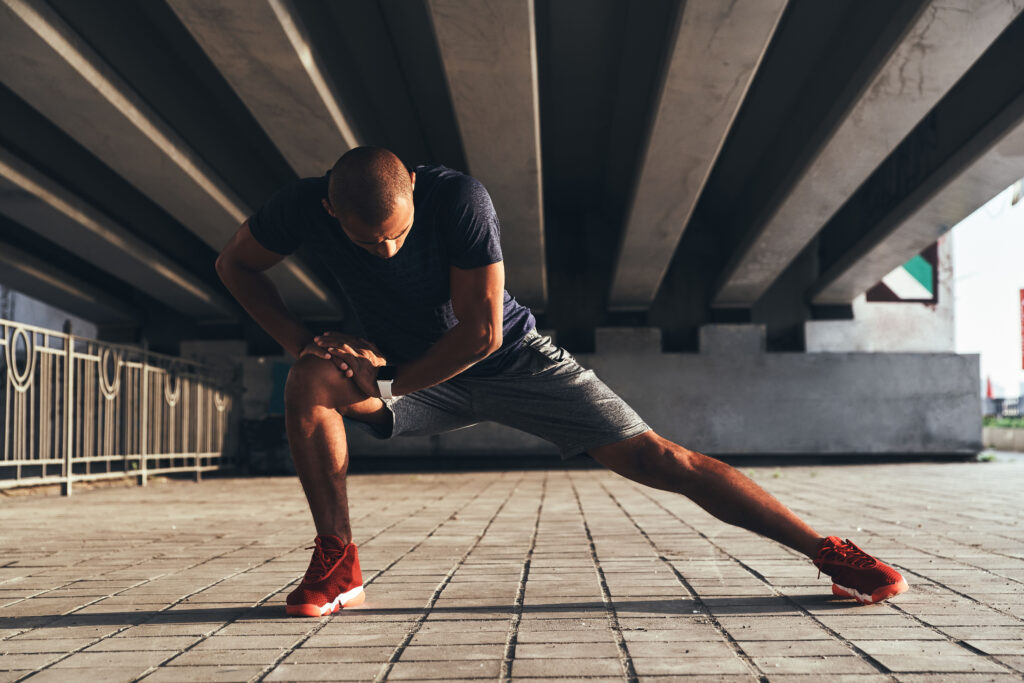AS ANY SEASONED runner will tell you, a good pair of running shoes can make all the difference in your training routine, with noticeable effects on performance, injury prevention and logically, the frequency of your runs. But it’s not just about finding the perfect pair – which is a challenge in its own right – it’s also about knowing when and how to rotate them.
It’s an often-overlooked strategy that beginners may not be familiar with, but building a shoe rotation into your running regimen can significantly enhance your performance and longevity. That’s why running brands – like New Balance – design shoes specifically for different forms of training – be it intervals, speedwork, recovery runs or longer efforts – rather than do-it-all sneakers that are good at everything but great at nothing.
Runners now have more options than ever when selecting a shoe – to the extent that it can be difficult to determine which shoes you need and how best to use them. But if you can accomplish the elusive task of building one, an effective shoe rotation can have your training firing on all cylinders. Truly, shoe rotation is an art. Here, we’re going to show you how to master it.

Why should you rotate your running shoes?
Sports science has come a long way in recent years, uncovering a multitude of reasons why you shouldn’t always run in the same shoes and why a rotation system can be beneficial.
Injury prevention
First and foremost, multiple studies have proven that alternating running shoes reduces the risk of injury. One study published in the Scandinavian Journal of Medicine and Science in Sports found that runners who rotated their shoes were 39 per cent less likely to experience an injury. This is because every shoe produces a slightly different variation in gait patterns, which determine which muscles, joints and ligaments are under the most stress during a run. By regularly switching your shoes up you place less repetitive stress on these areas, reducing your chances of picking up an injury and derailing your running goals.
Enhanced performance catered to you
Advancements in running shoe design have also allowed shoes to be targeted at specific types of runs. In case you weren’t aware, a brisk 3km jog around your local park and a marathon aren’t the same and presumably, you wouldn’t treat them as such mentally or physically. So why would you run them in the same shoes?
Modern running shoes are calibrated and designed for specific types of training runs. If it’s race day and you need something lightweight and hyper-responsive to help you run as fast as possible, there’s a shoe for that. If you’re just logging kilometres on your daily run and need something durable, there’s a shoe for that. And if you’re embarking on a longer run and comfort is your priority, there’s a max-cushioned shoe for that too. Specialisation is the key to optimising your running routine.
Extended shoe lifespan
The impact of a rotation system on shoe preservation cannot be understated, either. Shoes need time to return to their prime cushioning state and decompress – the same can be said about most runners after a particularly taxing effort. Using multiple pairs gives each shoe ample time to rest and recover after use, ultimately extending their lifespan. So, while investing in a few extra pairs may cost you more in the short term, it will actually end up saving you in the long run – and be especially useful for those longer runs.
Aesthetic considerations
Okay, we’ll admit this one’s totally subjective and not entirely necessary. But owning a variety of shoes does come with the benefit of being able to roll out different colourways with different gear. Look good, feel good, right?
How many running shoes should you have in your rotation?
This depends on the type of runner you are, as well as your ability and goals. For some runners, simply having two pairs in your rotation will be sufficient to aid injury prevention. A three-shoe rotation can also be effective on a daily training/speedwork/race day split. But if you want to be prepared for all types of training, we’d recommend a four-shoe rotation.

How can you build the ideal shoe rotation?
Firstly, assess the volume and style of your runs. If your weekly output is a single 5km hit out, you probably won’t need too many shoes in your rotation. But if you’ve built a comprehensive training regimen to prepare for a marathon and are logging upwards of 30km per week, you’ll likely be embarking on various types of runs and will need a variety of shoes to achieve optimal results.
It can be tempting to mix-and-match brands, but it’s best to stick to one to ensure your shoes complement rather than compete with each other. Every footwear brand is currently trying to produce the perfect shoes for every slot in your rotation, and New Balance has tailored and curated their range architecture for this very reason, with its Fresh Foam X platform for soft, cushioned and durable daily miles, and the FuelCell platform for your faster, high impact session training for raceday.
FuelCell SuperComp Trainer v3: the all-rounder
The SuperComp Trainer v3 is your go-to all-rounder, bringing race day performance to everyday training. It’s capable of handling everything from short-burst interval training to long runs, plus everything in between. It has all the heavy cushioning of a regular daily trainer but it’s doubly responsive, with a curved carbon plate in the midsole – something usually reserved for a race day shoe. Take it on a long run or a quick sprint, the SC Trainer will give you everything you need and then some.
FuelCell Rebel v4: the speed demon
It helps to have a lightweight shoe for speedwork or interval training in your line-up, and you won’t find a better one than the FuelCell Rebel v4. It’s an up-tempo shoe built for shorter, intense efforts. The fourth iteration of the Rebel has a taller and wider sole than previous versions and is even bouncier than its predecessors thanks to an enhanced FuelCell foam midsole. It’s also shockingly lightweight – weighing in at a measly 200 grams in a men’s US 9.5. All of this makes it perfect for speedwork and threshold training, or whenever you want to push a little harder during a session.
Check out our full review of the FC Rebel here.
FuelCell SuperComp Elite v4: the race day professional
A barnstorming race day shoe completes the rotation. These are the fastest shoes in your line-up. Why don’t I just wear them for every run then, you ask? Well, you can if that’s your inclination, but they’re best saved for when you want to move at your absolute fastest. The SuperComp Elite v4 released earlier this year to much fanfare – some of which came from yours truly – and received a new colour up this month. The shoe features an extremely lightweight construction, a full-length carbon plate in the midsole and high-level energy-return – which, according to New Balance’s sports research lab, is 4 per cent more powerful than its predecessor. The SuperComp Elite v4 is the shoe built for race day.
Read our full review of the SC Elite here.
Fresh Foam X 1080v14: the daily trainer
Lastly, a reliable daily trainer is a must in any rotation. It’s the workhorse you’ll log most of your kilometres in, with a balance between durability and comfort. Whilst not part of New Balance’s FuelCell range, look no further than the Fresh Foam 1080v13. New Balance says that if it only made one running shoe, it would be the 1080. The 1080v14 drops in mid October and will be the latest and most innovative max-cushioned shoe, perfect for daily training or making a statement at run club.

So there you have it. If you’ve been paying attention, you should have all the information needed to go from a shoe rotation novice to a master. By applying the principles of shoe rotation to your running routine, you can prevent injury, enhance performance and prolong the lifespan of your shoes. And if you’re ready to start building your shoe rotation, look no further than New Balance.
This article is brought to you by New Balance.
Related:
Tried & tested: New Balance SuperComp Elite v4
Metallic footwear is in – and these New Balance trainers are the ultimate buy















